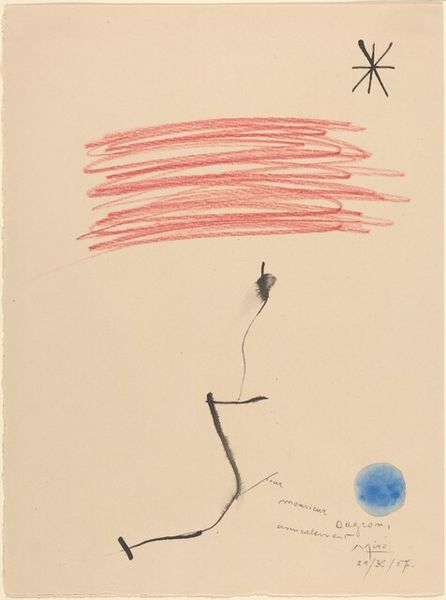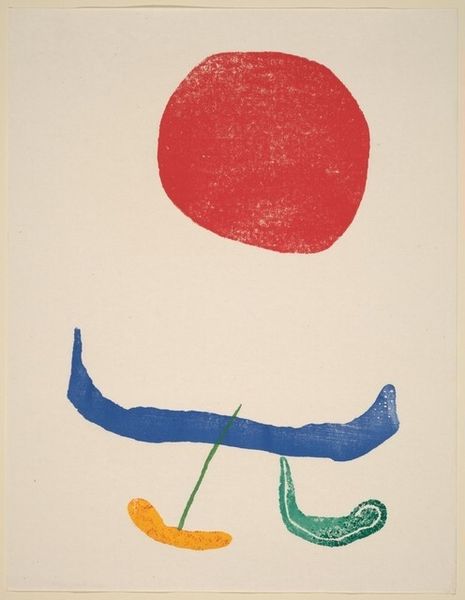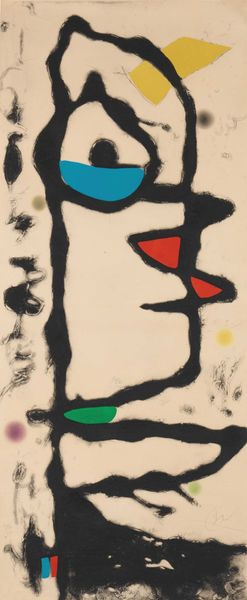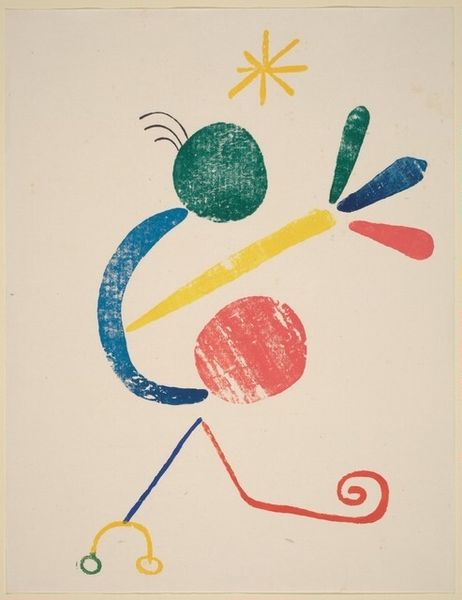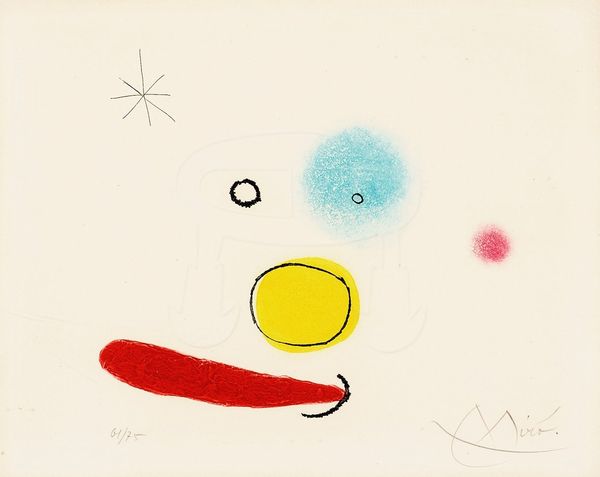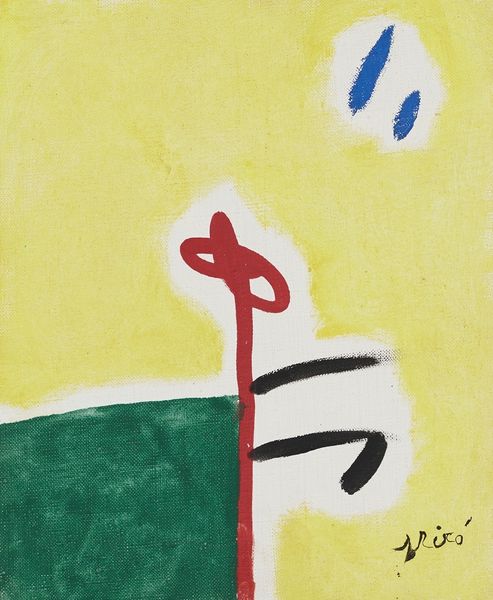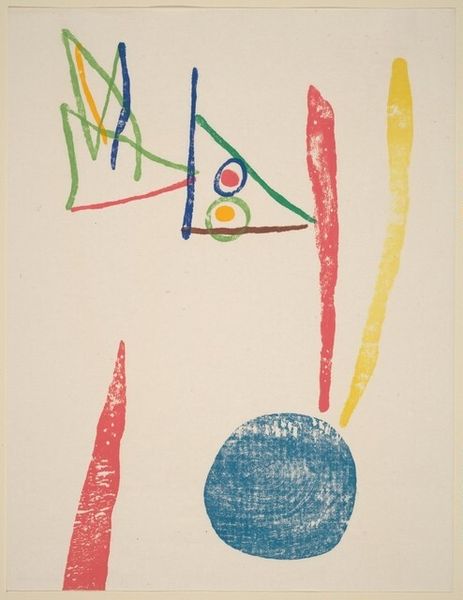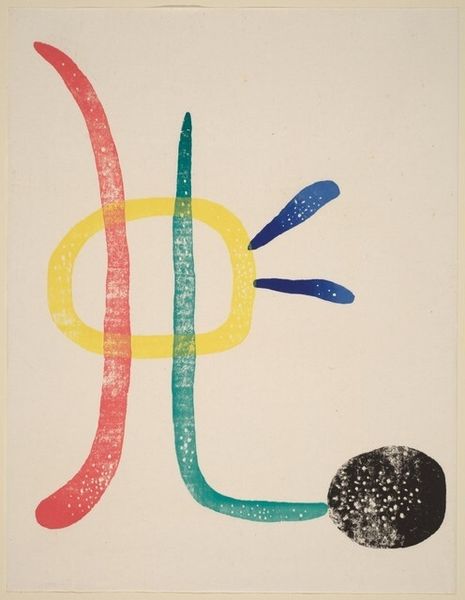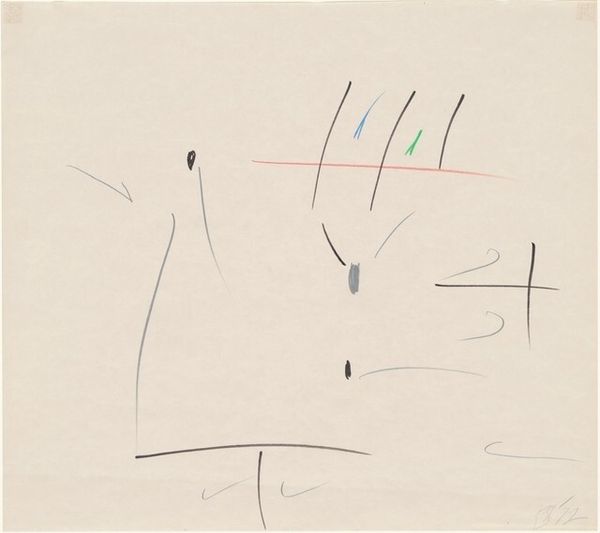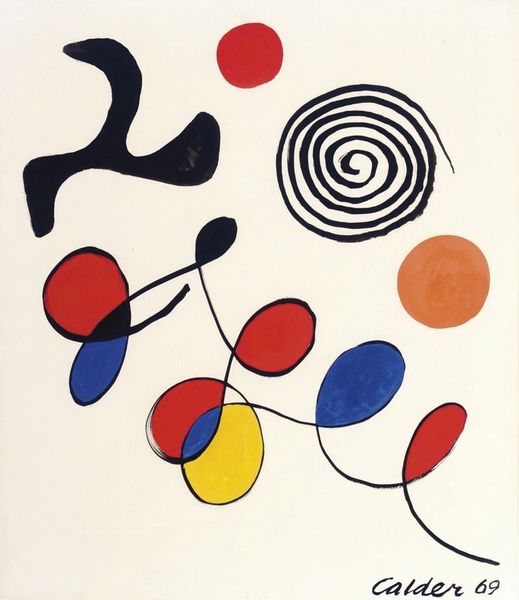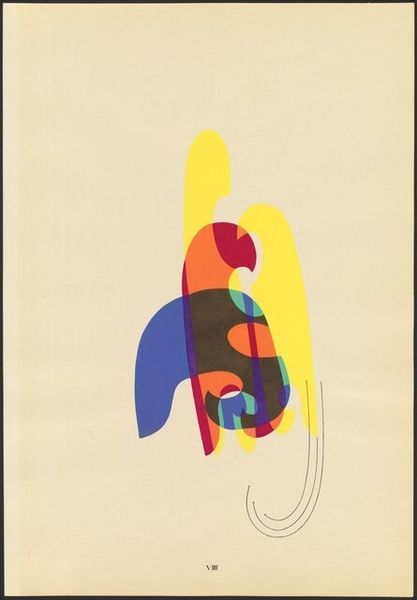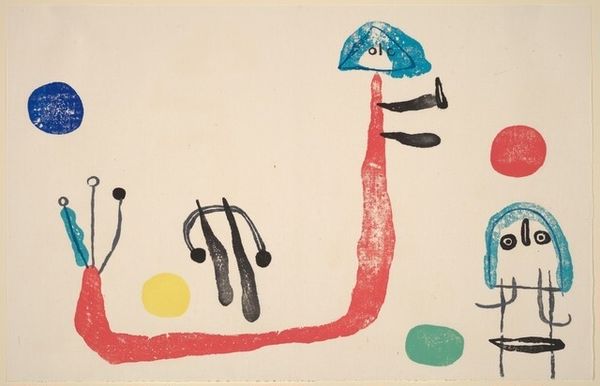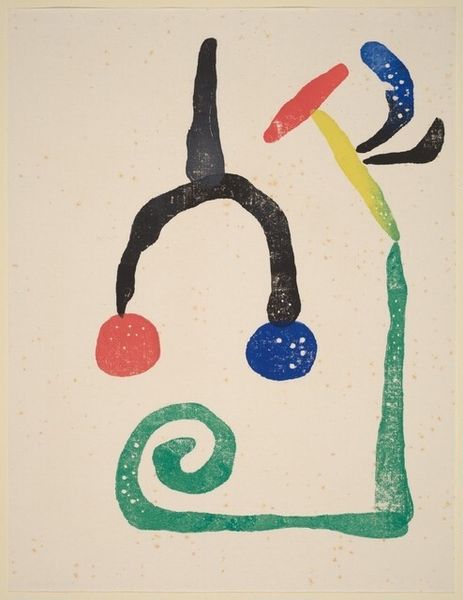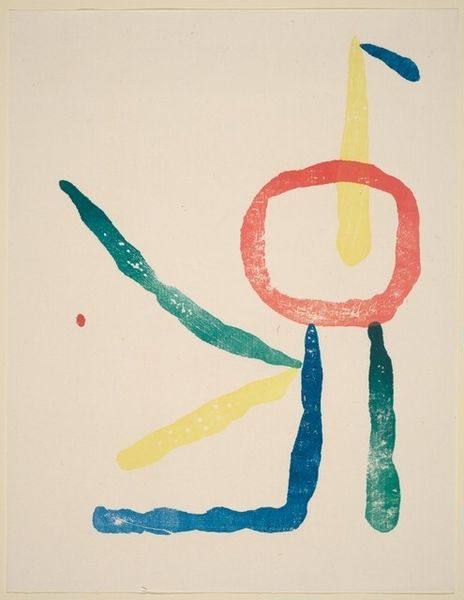
drawing, painting, ink, pastel
#
drawing
#
blue ink drawing
#
painting
#
abstract
#
form
#
ink
#
geometric
#
joyful element
#
abstraction
#
line
#
pastel
#
surrealism
#
modernism
Copyright: Modern Artists: Artvee
Curator: Immediately, I'm struck by how airy this piece feels. The washes of pastel and simple black lines give a sense of levity. Editor: That’s a fascinating entry point. We’re looking at Joan Miró’s "Au Clair de Lune", or "Moonlight" from 1942. It's rendered in ink and pastel on paper. 1942 was, of course, during the Second World War, a truly oppressive and devastating time. Can we explore what such levity might communicate? Curator: The shapes! There's a collection of circular forms rendered in pastel hovering above the sketched figure. Each shape pulses with its own quiet energy. I can't help but notice that these luminous orbs almost evoke an interplay of the cosmos above this figure, rendered in spare detail, suggesting a kind of inner illumination or, maybe, a figure gazing upward in hope. Editor: The symbolism, both personal and collective, in Miro's work is very deep. Considering that Miró remained in Spain during the Franco regime and created this work during the Nazi occupation of France, "Moonlight" seems less an escape and more a determined act of resistance. Here, abstraction allows the artist to suggest defiance. Curator: So the symbolism is key in connecting this image to collective hope through such darkness, rather than any literal depiction, right? I am seeing this defiance in the simplified figure with strong linear features reminiscent of Catalan peasant figures he used earlier in his career, who represented Catalan identity at a time of cultural repression. Editor: Precisely. This visual vocabulary—reduced yet potent—became his signature for a reason. What appear as simple, almost childlike forms, hold complex cultural memory. Miró employs archetypal symbols in response to the world around him, filtered and transformed through the lens of personal experience. The 'moonlight' in the title hints to us the hidden language of the dark, a necessary source of illumination and, therefore, perhaps a mode of enduring hardship. Curator: I leave today understanding how abstraction here doesn't serve as just an aesthetic move, but as a vessel through which symbols are deployed to signal defiance, hope, and cultural pride, making his aesthetic choices powerful, perhaps radical, for the time. Editor: Indeed. "Moonlight" reveals that even in the face of profound historical anxieties, art can give form to a silent, yet persistent, resistance, allowing for symbols to operate on different, meaningful, levels.
Comments
No comments
Be the first to comment and join the conversation on the ultimate creative platform.
